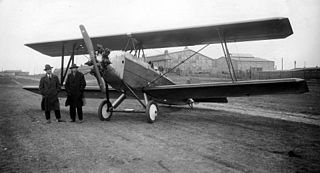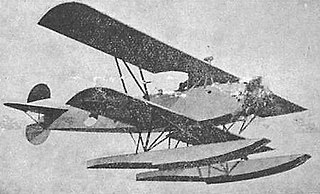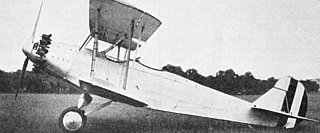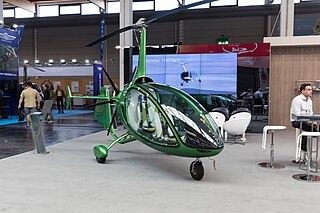The Central Centaur IV, a.k.a. Central C.F.5, was a British civil two/three-seat biplane aircraft produced by Central Aircraft Company Limited of London.

The Albatros L 75 Ass was a German trainer biplane of the 1920s. Of conventional configuration, it seated the pilot and instructor in separate, open cockpits. The wings were single-bay, equal-span, and had a slight stagger. Production continued after Albatros was absorbed by Focke-Wulf.

The de Havilland DH.29 Doncaster was a British long-range high-wing monoplane of the 1920s built by de Havilland.

The BAT F.K.24 Baboon was a British two-seat training biplane produced by British Aerial Transport Company Limited of London during World War I.

The BAT F.K.26 was a British single-engined four-passenger biplane transport aircraft produced by British Aerial Transport Company Limited of London at the end of World War I.

The Bartel BM 2, originally Bartel M.2 was a Polish biplane primary trainer aircraft prototype of 1926.

The Douglas Cloudster was a 1920s American biplane aircraft. It was the only product of the Davis-Douglas Company, and was designed to make the first non-stop flight coast-to-coast across the United States.

The Fokker C.VII-W was a reconnaissance seaplane built in the Netherlands in the late 1920s. Sharing elements of the highly successful C.V design, the C.VII-W was a conventional, single-bay biplane with wings of unequal span braced with N-struts. The undercarriage consisted of a standard twin-pontoon arrangement, and the fin and rudder continued through to the ventral side of the fuselage, creating a cruciform tail. The pilot and observer sat in tandem, open cockpits. The wing structure was wooden with fabric and plywood covering, and the fuselage was of steel tube construction with fabric covering.

The Heinkel HD 22 was a trainer designed in Germany during the 1920s. It was a conventional single-bay biplane with staggered wings braced with N-type interplane struts. The pilot and instructor sat in tandem, open cockpits, and the main units of the fixed, tailskid undercarriage were linked by a cross-axle.

The Keystone K-55 Pronto was a mail plane developed in the United States in the late 1920s.
The Beardmore W.B.II was a British biplane fighter prototype of the 1910s.

The Sopwith Wallaby was a British single-engined long-range biplane built during 1919 by Sopwith Aviation Company at Kingston upon Thames.

The Hatz Classic is an American homebuilt biplane, designed by Billy Dawson and produced by the Makelan Corporation of New Braunfels, Texas. The aircraft is supplied as a kit or, alternatively, in the form of plans for amateur construction.
The Deland Travel Air 2000 is an American homebuilt aircraft that was designed and produced by Orlando Helicopter Airways, an aircraft maintenance and repair company located in DeLand, Florida. When it was available the aircraft was supplied as a kit for amateur construction and marketed under the "Deland" brand, named for the company's location. Plans were also available.
The St Croix Pietenpol Aerial is an American homebuilt aircraft that was designed by Chad and Charles Willie and produced by St Croix Aircraft of Corning, Iowa, first flown in 1977. When it was available the aircraft was supplied in the form of plans for amateur construction, with partial kits available.

The SkyDancer SD-260 was an American aerobatic homebuilt biplane that was designed and produced by SkyDancer Aviation of Louisville, Kentucky, introduced in the mid-1990s. When it was available the aircraft was supplied as a kit.

The Caudron C.33 "Landaulet Monsieur-Madame" was a French twin engined biplane with four seats, two in open cockpits and two in an enclosed cabin.

The Niki Kallithea is a Bulgarian autogyro designed and produced by Niki Rotor Aviation of Pravets, introduced in 2011. The aircraft is supplied complete and ready-to-fly.

The Zeppelin-Lindau Gs.I, often known post-WWI as the Dornier Gs.I after its designer Claude Dornier, was a civil flying boat developed immediate post-war from a military prototype. Its passenger cabin seated six. Only one was completed, and that was eventually scuttled to keep it out of Allied hands. Another of the military prototypes was intended to have a bigger, nine seat cabin and other refinements but the Gs.II was incomplete when discovered by Allied inspectors.

The Butler Blackhawk and the Skyway from which it was developed were American three-seat open-cockpit single engine biplanes of the late 1920s that were built in small numbers immediately prior to having their intended production run interrupted by the onset of the Great Depression.
















